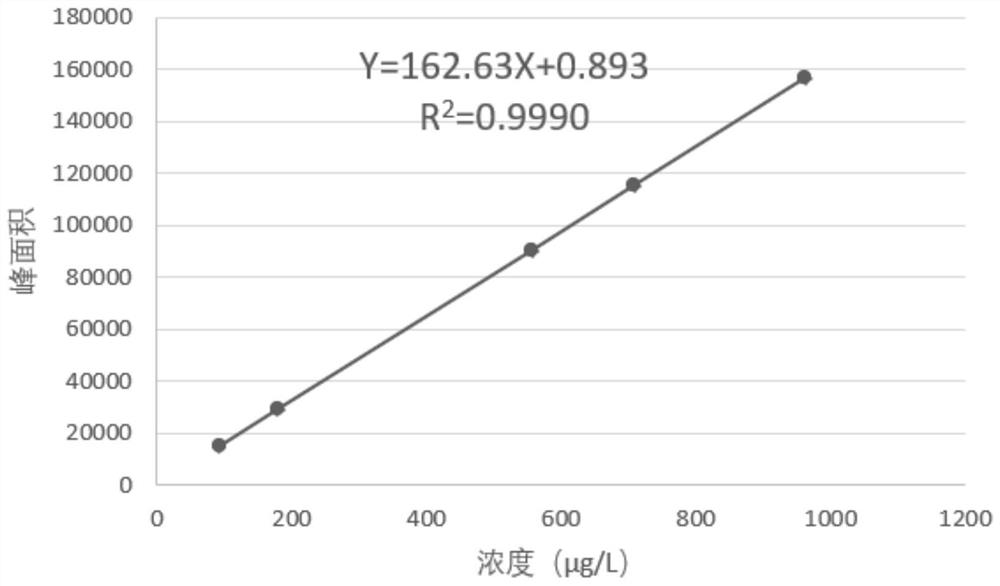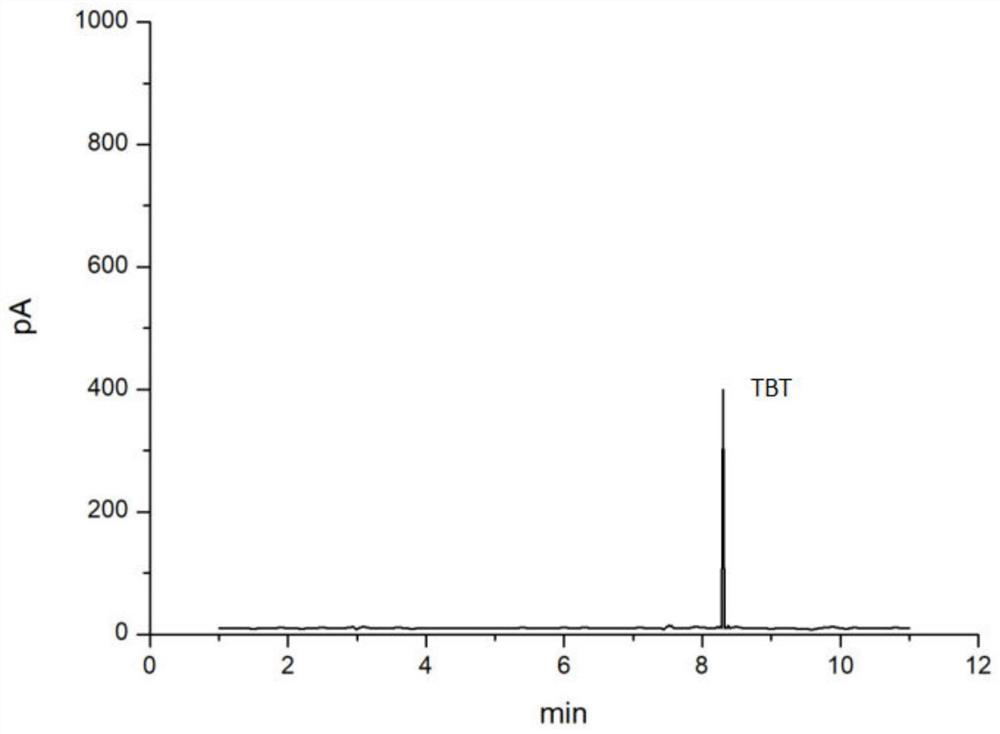Method for detecting organic tin in water body
A detection method and organotin technology, applied in the field of water pollution detection, can solve the problems of elution and long extraction time, and achieve the effects of saving elution time, reducing operation difficulty and improving environmental friendliness.
- Summary
- Abstract
- Description
- Claims
- Application Information
AI Technical Summary
Problems solved by technology
Method used
Image
Examples
Embodiment 1
[0030] S1. Sampling - collect water sample 1 from the backwashing drainage of the water plant filter into the sampling bottle, after standing still for 2 hours, filter it through a 0.45μm polyvinylidene fluoride filter membrane, pour it into a brown glass bottle, and put the glass bottle into Store at 0°C.
[0031] S2. Sample preparation—take 50 ml of the sample to be tested in step S1, add 20 mL of methanol solution containing 1% (v / v) hydrochloric acid to the sample, and stir well until the mixture is uniform. After refluxing at a high temperature of 40° C. for 30 minutes, filter through the polyvinylidene fluoride filter membrane described in step S1 again to obtain a pretreated water sample.
[0032] S3. Liquid-liquid extraction and concentration of samples—add 20 mL of pH 2.0 phosphate-citrate buffer solution and 10 mL of tert-butyl ether solution to the pretreated water sample obtained in step S2, add high-purity water to dissolve and dilute to 100mL, then shake the dis...
Embodiment 2
[0044] S1. Sampling—the difference between the process and Example 1 is that the water sample taken is water sample 2, which is different from other water samples in collection time.
[0045] S2. Sample preparation—the process is exactly the same as in Example 1.
[0046] S3. Liquid-liquid extraction and concentration of the sample—the process is exactly the same as in Example 1.
[0047] S4. Ethylation and constant volume of the sample—the process is different from that of Example 1 in that the pH of the ethylation reaction system is controlled to be 6.0.
[0048] S5. Prepare standard solution—the process is exactly the same as that in Example 1.
[0049] S6. Detection by gas chromatography-flame photometry—the process is exactly the same as that in Example 1.
[0050] S7. Determination of standard curve—the process is exactly the same as that in Example 1.
[0051] S8. Characterization of results——the corresponding quantitative peak area of the organotin in the chromato...
Embodiment 3
[0057] S1. Sampling—the difference between the process and Example 1 is that the water sample taken is water sample 3, which is different from other water samples in collection time.
[0058] S2. Sample preparation—the process is exactly the same as in Example 1.
[0059] S3. Liquid-liquid extraction and concentration of the sample—the process is exactly the same as in Example 1.
[0060] S4. Ethylation and constant volume of the sample—the process is exactly the same as in Example 1.
[0061] S5. Prepare standard solution—the process is exactly the same as that in Example 1.
[0062] S6. Detection by gas chromatography-flame photometry—the difference between the process and Example 1 is that the temperature of the injection port is set to 250°C
[0063] S7. Determination of standard curve—the process is exactly the same as that in Example 1.
[0064] S8. Characterization of results——the corresponding quantitative peak area of the organotin in the chromatogram obtained fr...
PUM
| Property | Measurement | Unit |
|---|---|---|
| pore size | aaaaa | aaaaa |
Abstract
Description
Claims
Application Information
 Login to View More
Login to View More - R&D
- Intellectual Property
- Life Sciences
- Materials
- Tech Scout
- Unparalleled Data Quality
- Higher Quality Content
- 60% Fewer Hallucinations
Browse by: Latest US Patents, China's latest patents, Technical Efficacy Thesaurus, Application Domain, Technology Topic, Popular Technical Reports.
© 2025 PatSnap. All rights reserved.Legal|Privacy policy|Modern Slavery Act Transparency Statement|Sitemap|About US| Contact US: help@patsnap.com



